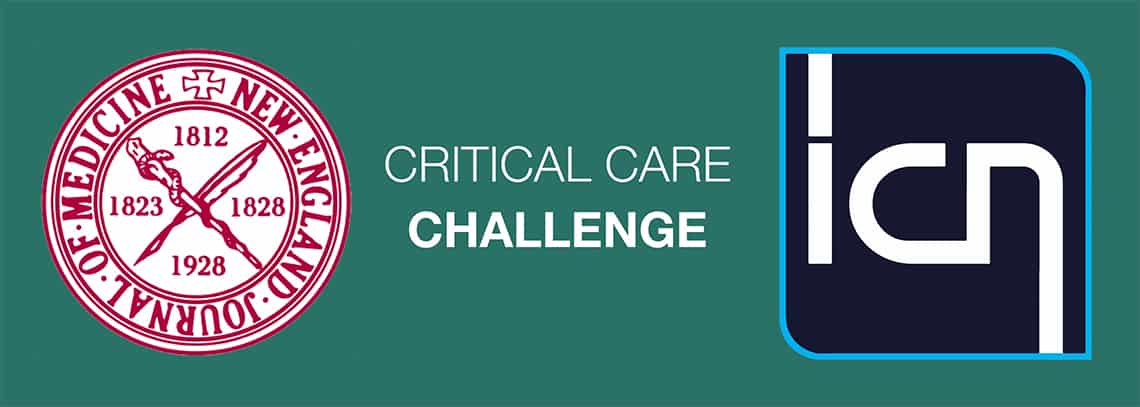A 77-year-old man whose medical history includes treated hypertension and hypercholesterolemia, previous heavy alcohol intake, and mild cognitive impairment is admitted to the ICU with fecal peritonitis after resection of the rectosigmoid colon and formation of an end colostom) performed for a perforated sigmoid colon. On arrival in the ICU, he was in septic shock. He is undergoing mechanical ventilation with the use of a low-tidal-volume protocol with PEEP. His blood pressure is supported with a noradrenaline infusion and analgesia is provided by a continuous morphine infusion. Having reviewed provision of nutrition last time he has been was started on enteral nutrition the day after ICU admission, and target intake was achieved on day 6.
Since it is likely that this patient will have a prolonged stay in the ICU, what measures would you take to optimize his long-term recovery?
1. Maintain a blood glucose level of 80 to 110 mg per deciliter (4.4 to 6.1 mmol per liter) throughout his ICU stay,
2. Administer human growth hormone to improve nitrogen balance and preserve muscle mass and strength, or
3. Minimize sedation and institute early active and passive mobilization even while he is still undergoing mechanical ventilation.
[/az_box_icon]
Almost all of the NEJM’s poll participants elected to minimize sedation and institute early active and passive mobilization.
This approach was supported by the series editors; while some authors have demonstrated a reduced incidence of critical-illness neuromyopathy associated with strict glucose control, this has not been replicated and given the potential harm associated with tight BSL control, is not recommended. The use of growth hormone has been shown to be harmful.
As outlined in the terrific accompanying review article, weakness acquired in the ICU can comprise the following:
[az_tab_section] [tab title=”Critical Illness Polyneuropathy” id=”tab-1″]• Symmetrical pattern of weakness affecting the limbs, particularly the legs, more obvious proximally. Can affect respiratory muscles. Sensory function preserved.
• Characterised by primary axonal degeneration with subsequent loss of anterior horn cells at the spinal cord
• EPS show: preserved nerve conduction velocity but reduction in the amplitudes of compound muscle action potentials and sensory nerve action potential
• CK levels normal [/tab]
[tab title=”Critical Illness Myopathy” id=”tab-2″]• More frequent than polyneuropathy
• Clinically difficult to distinguish from neuropathy
• Characterised histologically by selective loss of thick filaments in muscle reflecting myosin loss and muscle necrosis
• EPS also show preserved velocity and reduced amplitude of CMAPs but with increased duration
• CK levels may mildly to markedly elevated [/tab]
[tab title=”Critical Illness Neuromyopathy” id=”tab-3″]• Combination of the two based on histology or EPS[/tab]
[tab title=”Something else…” id=”tab-4″]• Cervical myelopathy
• Guillian-Barre Syndrome
• Myasthenia gravis
• Others including Porphyria, Eaton–Lambert syndrome and amyotrophic lateral sclerosis [/tab] [/az_tab_section]
The review article provides a diagnostic algorithm to differentiate between these.
Importantly the review also notes that “the greatest burdens that survivors of critical illness face are related to neuromuscular dysfunction and neuropsychological maladjustment”. As such, acute care should be focussed on “optimising early physical activity” through minimising sedation and early mobilisation.
Coming soon – Case 10: Traumatic Intracranial Hypertension!


























